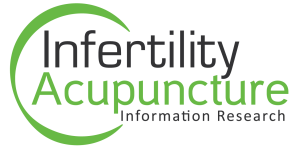
Author: Stener-Victorin Elisabet ; Kobayashi Rie ; Watanabe Orie ; Lundeberg Thomas ; Kurosawa Mieko
Abstract:
Abstract
Background
Maintenance of ovarian blood flow (OBF) is suggested to be important for regular ovulation in women with polycystic ovaries (PCO). The purpose of the present study was to investigate whether electro-acupuncture (EA) of different frequencies and intensities can improve the OBF of anaesthetized rat in the animal model of PCO.
Methods
PCO was experimentally induced by a single intramuscular (i.m.) injection of estradiol valerate (EV) in rats. Control rats were given i.m. injection of oil. The involvement of the two ovarian sympathetic nerves; superior ovarian nerve (SON) and plexus ovarian nerve (OPN), in OBF responses was elucidated by severance of SON and OPN in both control and PCO rats. How systemic circulatory changes affect OBF was evaluated by continuous recording of the blood pressure. OBF was measured on the surface of the ovary-using laser Doppler flowmetry. Acupuncture needles were inserted bilaterally into the abdominal and hind limb muscles and connected to an electrical stimulator. Two frequencies – 2 Hz (low) and 80 Hz (high) – with three different intensities – 1.5, 3, and 6 mA – were applied for 35 s.
Results
Low-frequency EA at intensities of 3 and 6 mA elicited significant increases in OBF in the Control group compared to baseline. In the PCO group the increases in OBF were significant only when stimulating with low-frequency EA at 6 mA. After severance of the ovarian sympathetic nerves, the increased response of OBF that had been induced by low-frequency EA in both the Control and PCO group was abolished, indicating that the OBF response is mediated via the ovarian sympathetic nerves. High-frequency EA at 6 mA significantly decreased OBF and mean arterial blood pressure (MAP) in the Control group compared to baseline. In the PCO group, the same stimulation produced similar decreases in MAP, but not in OBF.
Conclusion
Low-frequency EA stimulation with a strong intensity (6 mA) increases OBF in rats with steroid-induced PCO whereas less strong intensity (3 mA) induces similar changes in control rats. Severance of the ovarian sympathetic nerves, abolish this OBF increase in both study groups, which suggests that the responses of OBF to EA are mediated via the ovarian sympathetic nerves.
Journal: Reproductive Biology and Endocrinology
Issn: 14777827
